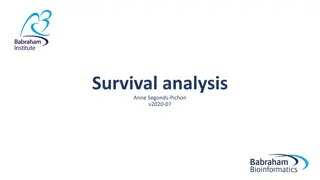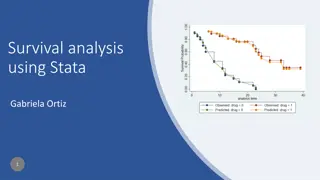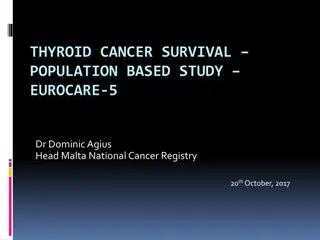Evolution of Tardigrades: Cryptobiotic Survival Strategies
Tardigrades, also known as water bears, exhibit fascinating cryptobiotic strategies enabling them to survive extreme conditions. Their ability to undergo cryptobiosis suggests adaptation to unstable environments, possibly even extraterrestrial. Research involving the investigation of tardigrades' cryptobiotic processes and their evolution sheds light on their resilience and adaptability. The experimental procedures involving desiccated and cryptobiotic tardigrades on Earth and the ISS aim to study their survival rates, offering insights into their remarkable survival mechanisms.
Download Presentation

Please find below an Image/Link to download the presentation.
The content on the website is provided AS IS for your information and personal use only. It may not be sold, licensed, or shared on other websites without obtaining consent from the author.If you encounter any issues during the download, it is possible that the publisher has removed the file from their server.
You are allowed to download the files provided on this website for personal or commercial use, subject to the condition that they are used lawfully. All files are the property of their respective owners.
The content on the website is provided AS IS for your information and personal use only. It may not be sold, licensed, or shared on other websites without obtaining consent from the author.
E N D
Presentation Transcript
TARDIGRADE CRYPTOBIOTIC STRATEGIES VS. MICROGRAVITY
Acknowledgments: Local Partners, Advisors, and Funders The Ahmanson Foundation Ms. Trojanowski Dr. James M. Lally William Saito (Cabinet Office (Government of Japan), Ministry of Education - Central Council for Education) Ms. Curry Dr. Michael Williams Professor Jonathan Wright (Pomona College) Dr. Tas Dienes (Chief Technology Officer at SmartAction) CASIS Martina Ramirez (Loyola Marymount University) Subaru of America, Inc.
Research Team Co-Principal Investigators Ashwin Balaji (Grade 12) Garrett Souza (Grade 12) David Washington (Grade 12) Investigator Richard Conti (Grade 12) Collaborator Aaditya Patel (Grade 12) Teacher Facilitator Ms. Trojanowski, Damien High School Teacher
Evolution of Tardigrades The ability to undergo cryptobiosis suggests that tardigrades evolved in an unstable and rigorous environment Tardigrades cryptobiotic abilities and tolerance to rigorous environments suggests they could have evolved in an extraterrestrial environment
The Cryptobiotic Process When faced with adverse environmental conditions tardigrades shut down all metabolic processes and enter into a wrinkled tun state, as seen on the left. Once reintroduced to hospitable conditions, the process is reversed Initial Ground Truth Experiment: 20 of 23 specimens exhibited mobility after 10 days in a cryptobiotic state
Experiment Procedure Two sets of tardigrades, one desiccated in moss and one in a cryptobiotic state on wax paper, will be sent to the ISS Another two sets, identical to those on the ISS, will be studied on Earth At the end of the trial period, all tardigrades will be returned to a hydrated state, and their survival rate will be compared to that of the ground experiment
Finding Specimens Initial procedure used Carolina Biological as a source of tardigrades After several trials, and contacting the lead biologist at Carolina Biological, it was determined that the ability to enter into a cryptobiotic state adapted out of their culture The specimens used in the experiment were gathered from the foothills of Glendora, CA A Baermann funnel was used to isolate the tardigrades from the moss Three species of tardigrades were native to the Glendora foothills and used in the experiment: Milnesium tardigradum, Echiniscus testudo, and Macrobiotus occidentalis
Experimental Implications If tardigrades are able to survive a prolonged period of exposure to microgravity, it is possible that they could have originated from an extraterrestrial environment. Furthermore, if the cryptobiotic state sufficiently protects tardigrades from the adverse conditions of space, this could present a possible mechanism by which humans can survive the longevity and physical rigors of deep space travel



























